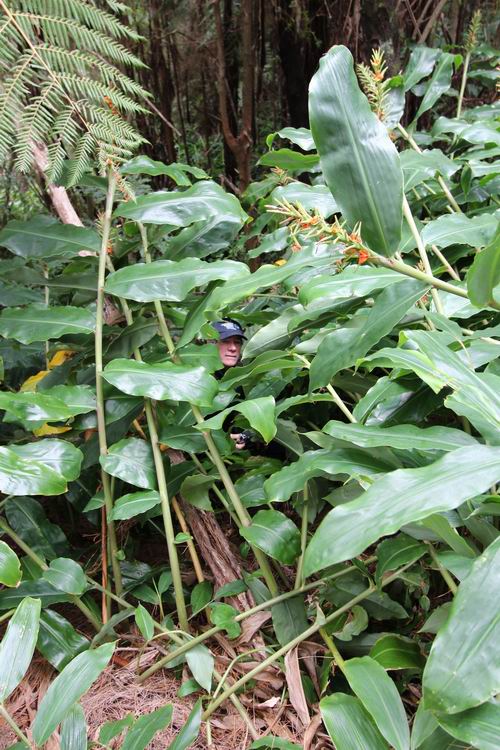Battle against wild ginger heats up
14 Sep 2016, 1:20 PM
Biological and cyber warfare are two of the latest tools a multi-agency group is keen to employ to tackle a serious weed pest that has invaded thousands of hectares of Northland.
Wild ginger – originally native to Nepal – loves Northland’s warm and wet climate and its high rate of spread makes it an ‘ecosystem transformer’ that has already spread through at least 5000 hectares of the region.
Don McKenzie, Biosecurity Manager for the Northland Regional Council, says it’s a serious problem due to the way it takes over the forest floor and prevents native species from regenerating. “As the canopy begins to die, wild ginger is the only plant that is left.”
 Biosecurity Manager Don McKenzie is dwarfed by invasive wild ginger in the Helena Bay area near Whangarei.
Biosecurity Manager Don McKenzie is dwarfed by invasive wild ginger in the Helena Bay area near Whangarei.
Mr McKenzie says that process is already well under way along parts of Northland’s extensive coastline and wild ginger – a hybrid of Kahili ginger and white ginger introduced in the 1860s as a garden plant – now also threatens some of the region’s most important native kauri forests. It also impacts on commercial forestry, invading – and if unchecked – taking over what could be productive land.
Enter the Stop Wild Ginger Stakeholder Group, whose members include the region’s local authorities, Department of Conservation, Landcare Research, forestry companies and supporting iwi.
The group recently launched a multi-pronged campaign designed to:
- Provide a website – www.stopwildginger.co.nz – allowing people to report wild ginger infestations and seek help to tackle them;
- Educate the public about how invasive wild ginger is, its detrimental effects and potential biocontrol agents; special, host-specific diseases, fungi, insects or animals which will target it;
- Raise public support for a petition to introduce biocontrols.
Mr McKenzie says the latter is especially important.
“While small patches of wild ginger can be controlled through digging out by hand or by herbicides containing metsulfuron-methyl this is really only financially viable for infestations under one hectare.”
He says research shows the success rate for eradication in areas from one to 100ha falls to just 33 percent and for infestations above 100ha to 25%.
“Herbicides also often can’t be used is dense bush (where most of the infestations occur) or forestry areas, as metsulfuron-methyl can move through the soil and affect plants around the treatment site.”
Mr McKenzie says New Zealand needs to invest in smarter technologies, with the most effective and sustainable tool for the future likely to be a biological control agent.
“By using a natural predator of wild ginger we will hopefully be able to reduce this plant’s population down to manageable level.”
He says officials think there is much more than the 5000ha of wild ginger they already know about in Northland and are asking for the public’s help to map all the sites.
“We want to raise awareness of just how bad this weed is in Northland and fund research for better, smarter technologies to control it, so ‘drop a pin’ on our interactive website map, sign the petition and check out where wild ginger is in your neighbourhood.”
Mr McKenzie says those keen to do their bit can learn more about the wild ginger via the new website www.stopwildginger.co.nz
Information about biological control generally is also available via: www.nrc.govt.nz/nasties
